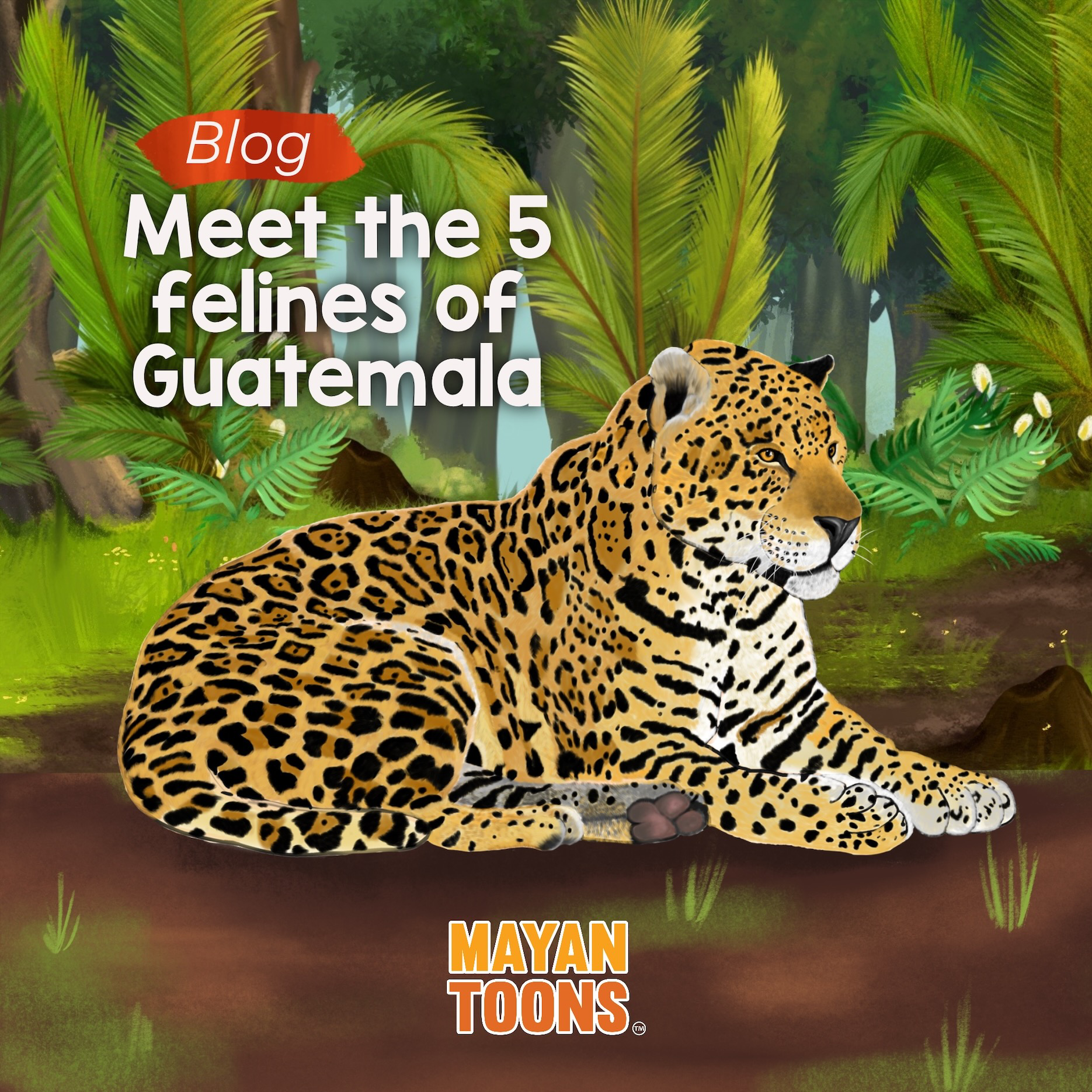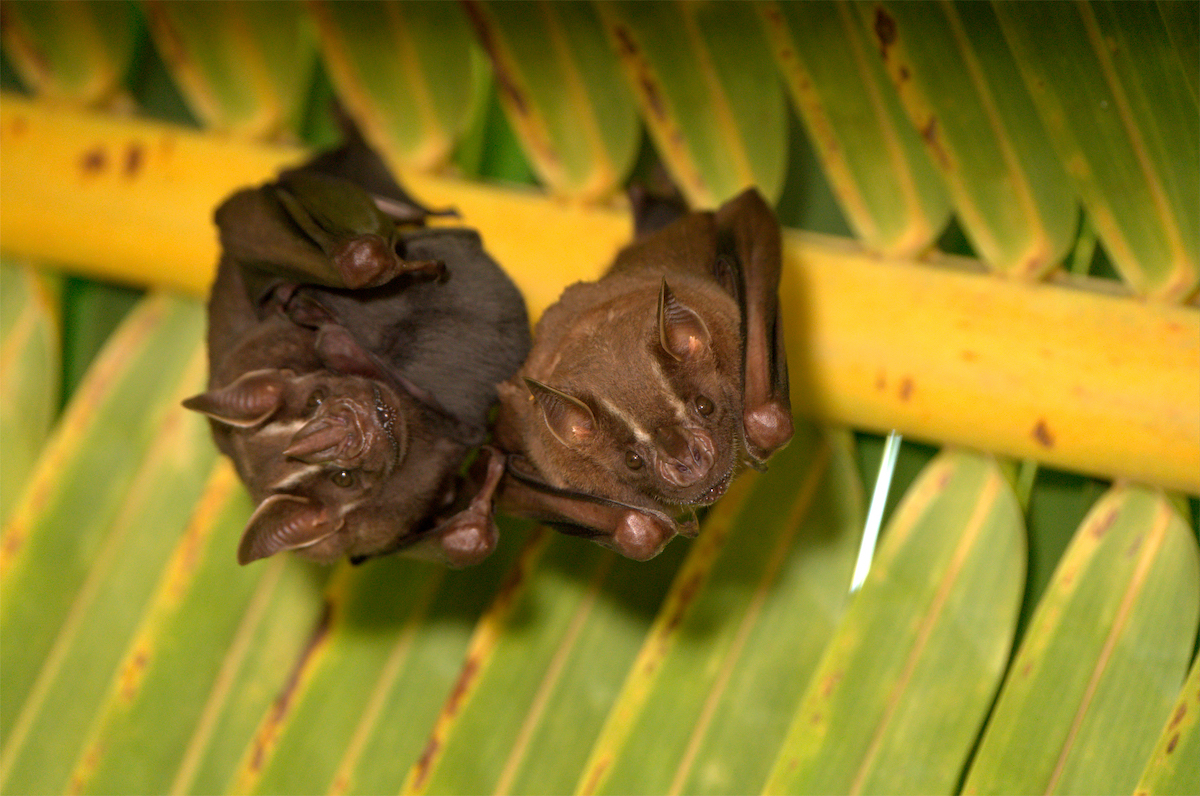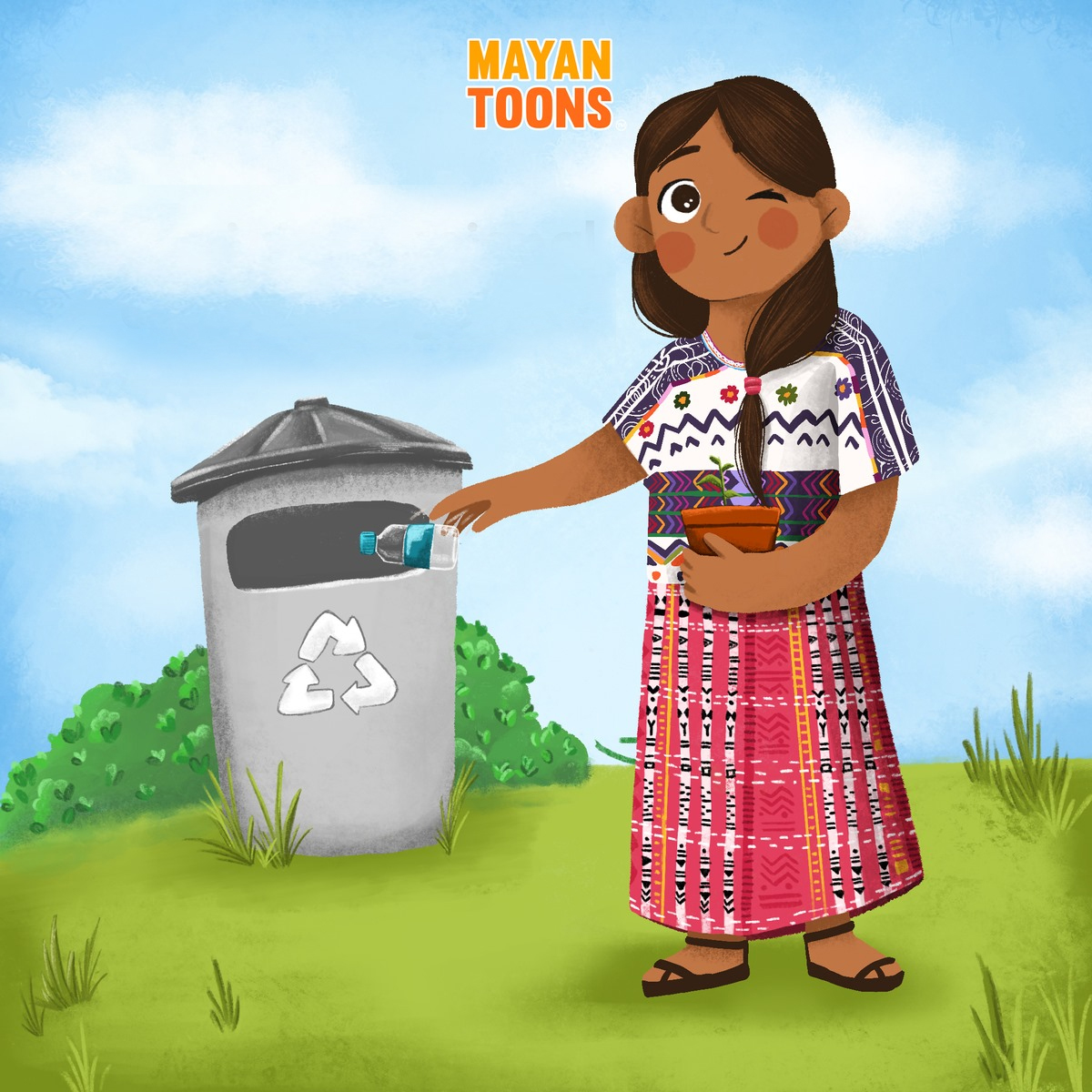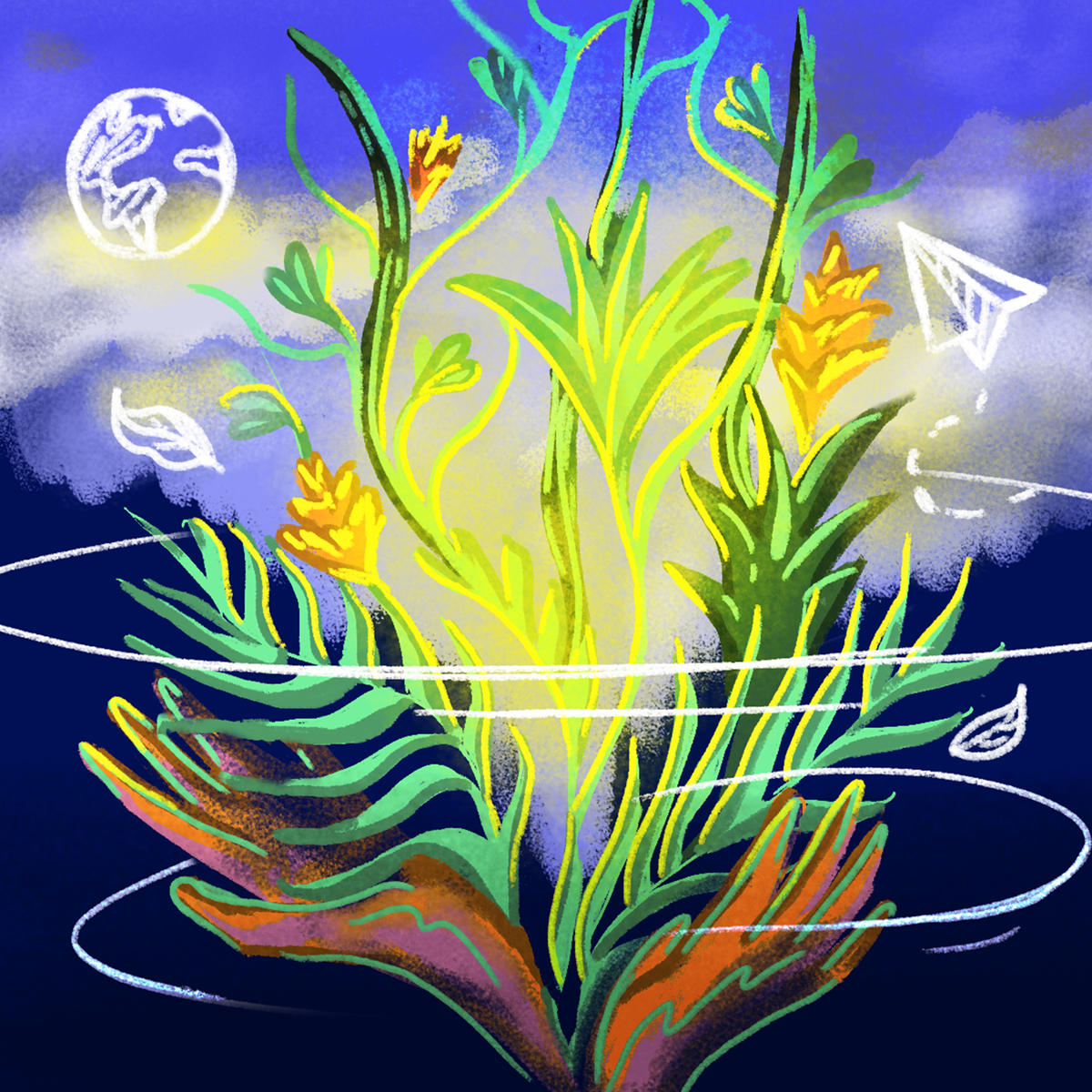
Palms are plants that grow mostly in warm places. This means that they cannot be found in every country around the world. In that sense, the tropical weather of Guatemala has made it possible that a remarkable amount of different palms grow here (even when Guatemala is such a small country).
In general, it is easy to mistake one palm for another, or for instance, to ignore that one is different from another. For that reason, some of the characteristics that can be considered to distinguish palms are the following:
Size
Several palms have divided leaves, such as in the first image of a palm that comes to mind (as those in the coconut palms). Nevertheless, the first characteristic that will differentiate any palm species, even from those with the typical palm leaf, is the size of the plant.
The pacaya or xate palms (Chamaedorea), as they are known in Petén,mainly have the typical palm leaf shape, but they never grow as tall as the coconut palms. In fact, these palms don’t surpass 6 or 10 meters in height. In addition, they have green stems, which rarely grow bigger than a ping-pong ball in diameter. Some of the smallest palms, which may reach up to 45 cm in height, also belong to this genus.
Therefore, if you find a palm with a green stem, which you can enclose with your hand and which does not surpass the height of a basketball backboard, it is most probable that it is a Chamaedorea palm.
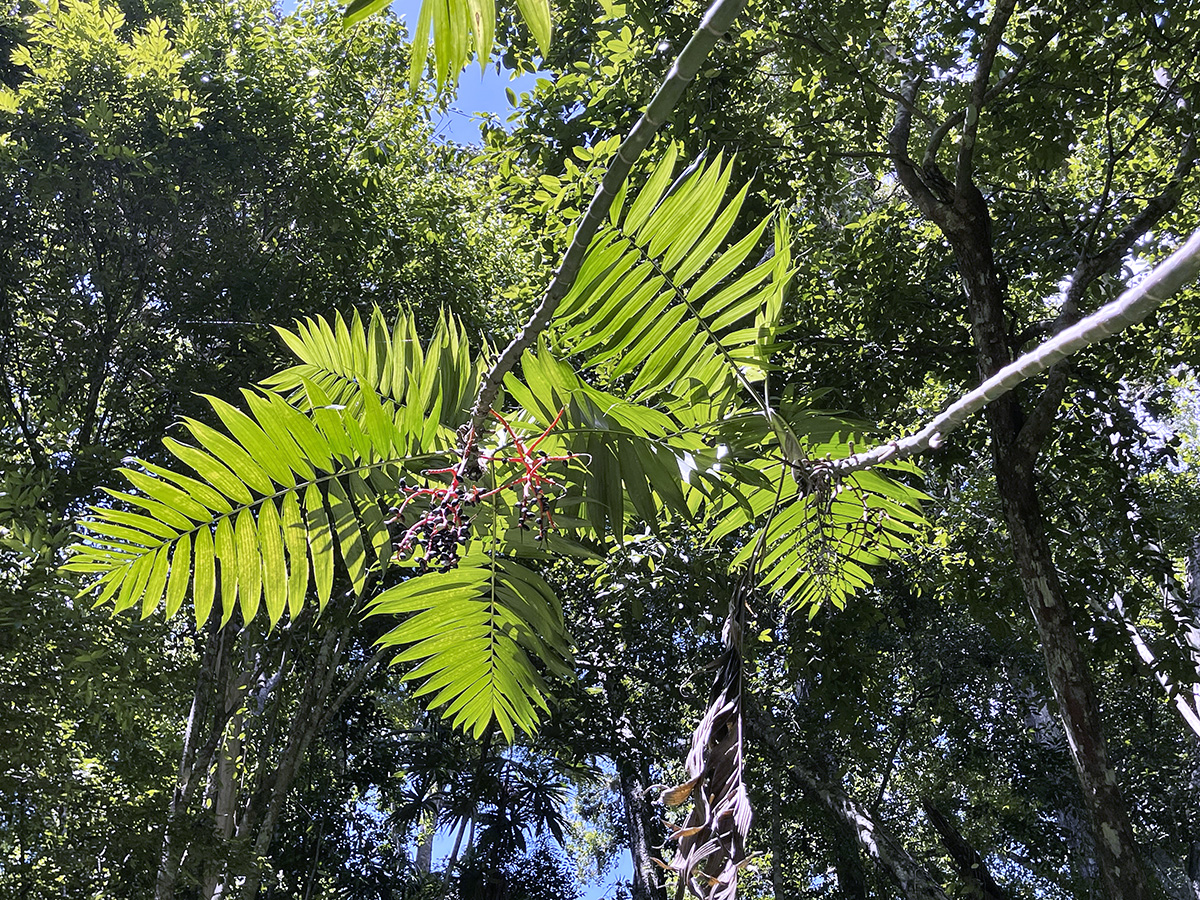
Chamaedorea tepejilote stem, leaves and inflorescences at the end of the Lincoln Causeway, at Yaxhá, Nakum and Naranjo National Park; Oct. 2021. Photography by: Nicholas Hellmuth.
At the other extreme, the biggest palms may be easily spotted for their outstanding dimensions. The genus of the corozo palm (Attalea) and the guano (Sabal) includes the biggest palms that grow in Guatemala. The corozo palm leaves alone can grow more than 10 meters long, they are almost as long as a scholar bus! These are not only some of the biggest palms that grow locally, but they also have some of the biggest leaves from all plants in the world. Moreover, guano palms have circular, fan-shaped leaves that can measure 2 meters in diameter.

Corozo palms growing in dense and broad groups can be found in Yaxhá, Nakum and Naranjo National Park. Each of the leaves in this picture surpass 8 m in length. Photography by: Nicholas Hellmuth.
Most of the other palms that grow in Guatemala, are among the size between Chamaedoreas and corozo palms. Some of them can be spotted by the thickness of the stem. For instance, the only Gaussia species that is native to the country (G. maya) is one of the palms in the smallest range, but it has a brown stem that grows almost as big as a baseball ball in diameter.
Other palms can be distinguished by other characteristics.
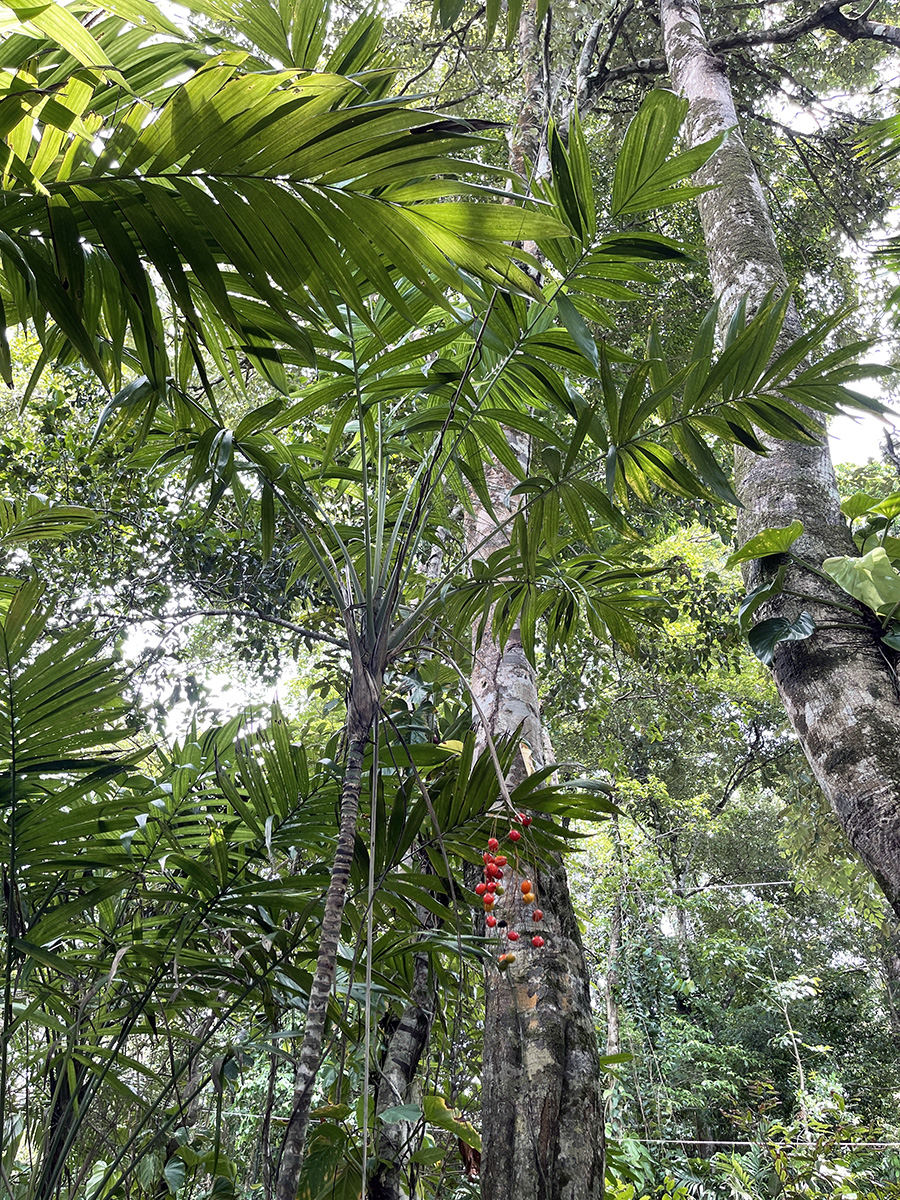
Gaussia maya at Aldea Buena Vista, Livingston; Jul. 2021. The fruits of this species are bright red when they ripen. Photography by: Nicholas Hellmuth.
Habit
The growing habit refers to the shape, form and manner, in which a plant grows. In the case of palms, for instance, it can refer to the shape of the stem or if they grow rather as solitary plants or in groups.
From these characteristics, another group of palms that can be easily identified is that of the bayal palm (Desmoncus) with a single species being reported in Guatemala so far. These palms have a climbing habit, which means that they grow scattered through the vegetation, instead of developing a firm and straight stem. Additionally, their stems are fully covered in prickles.
In contrast, species such as the escobo palm (Cryosophila stauracantha), as it is locally known in Petén, may grow up to 25 meters with slender and solitary stems, which will keep firm and straight even when they are rather thin in comparison to their height. The escobo palms can be spotted as well because the stems are fully covered in spines when they are young and they also develop a big amount of roots in the base of the stem. These roots form a section that looks like an inverted funnel.
The tasiste palms (Acoelorrhaphe wrightii) only grow in groups of several individuals. In fact, we have found vast areas among the Maya Biosphere Reserve which are almost exclusively covered by these palms.
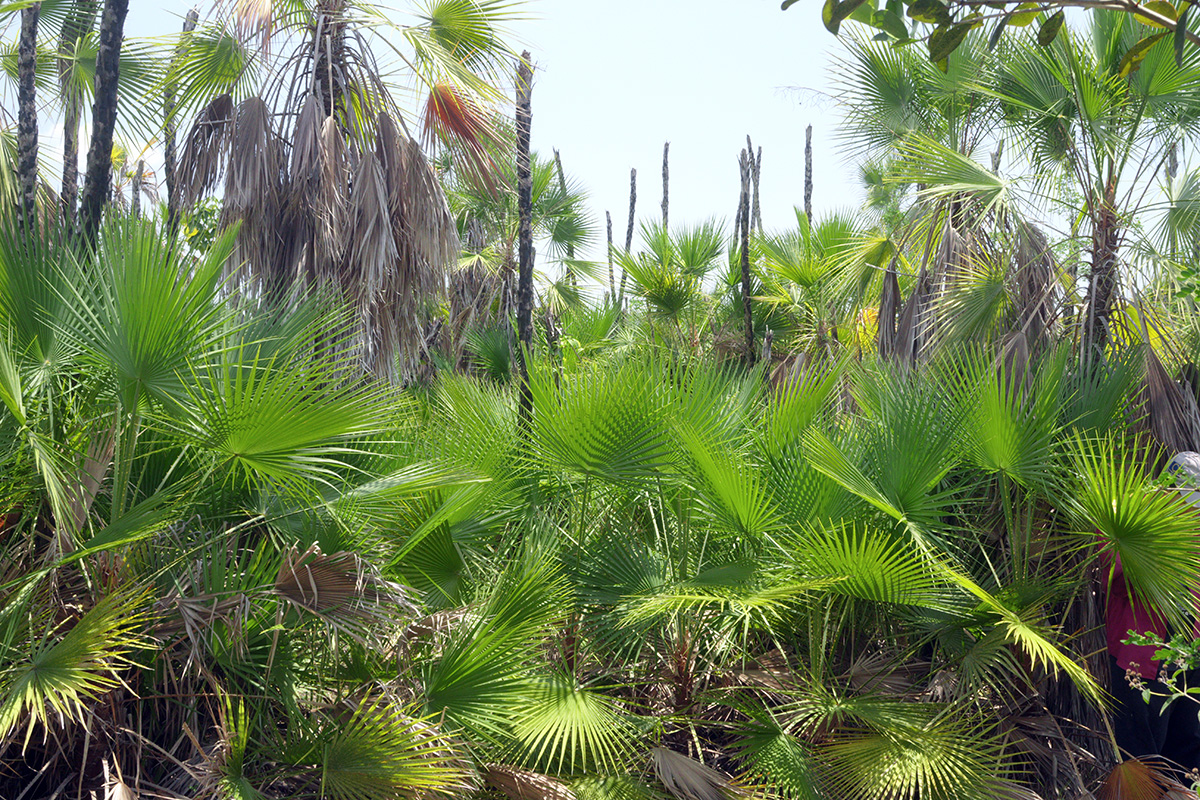
We’ve found one of the largest extensions filled almost exclusively with tasiste palms in Laguna del Tigre National Park; Mar. 2022. Photography by: Edwin Solares.
Leaf shapes
Besides the conventional palm leaf shape, there are other leaf shapes which make it easier to distinguish these plants from one another.
The escobo palm (Cryosophila stauracantha), the only Thrinax species in Guatemala (T. radiata), all the Sabal species, and the tasiste palm (Acoelorrhaphe wrightii), all have circular, fan-shaped leaves. The confra palm (Manicaria saccifera) has big, broad, oval leaves, which instead of being divided into smaller leaves, look as if they were rather torn off. At times, confra palms have complete leaves (not being ripped), but when they don’t, the same effect that happens with banana leaves can be seen , in which the leaves are irregularly ripped.
Some Chamaedorea palms have more unusual leaf shapes, such as those of the fish tail palm (Chamaedorea ernesti augusti). The Reinhardtia palms, on the other hand, may have undivided or divided leaves. When they are divided, they resemble the shape of butterflies.
In addition, some species such as the bayal palm (Desmoncus chinantlensis), or the huiscoyol palms (Bactris spp.) have leaves with spines.
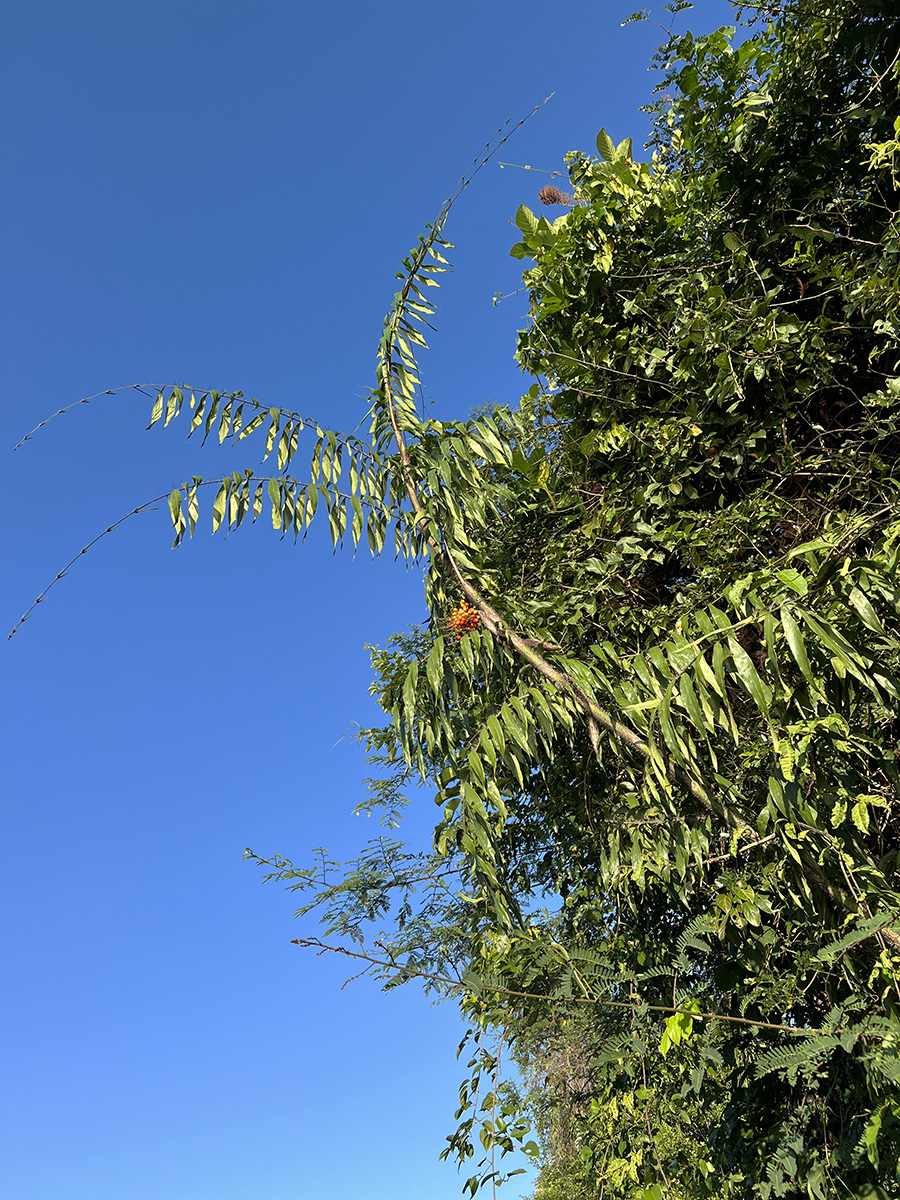
In this picture you can see the modified leaves that look like spines in the top of each leaf of Desmoncus chinantlensis. These let the plant secure itself to other plants and climb up to the canopy. Rio Chocon Machacas, Dec. 2021. Photography by: Nicholas Hellmuth.
Inflorescence shape and color
An inflorescence is a group of flowers. In palms, flowers tend to grow in racemes. To identify the rest of palm groups or individual palm species, the color of the racemes, the shape of the flowers, and both the color and shape of the fruits can be checked.
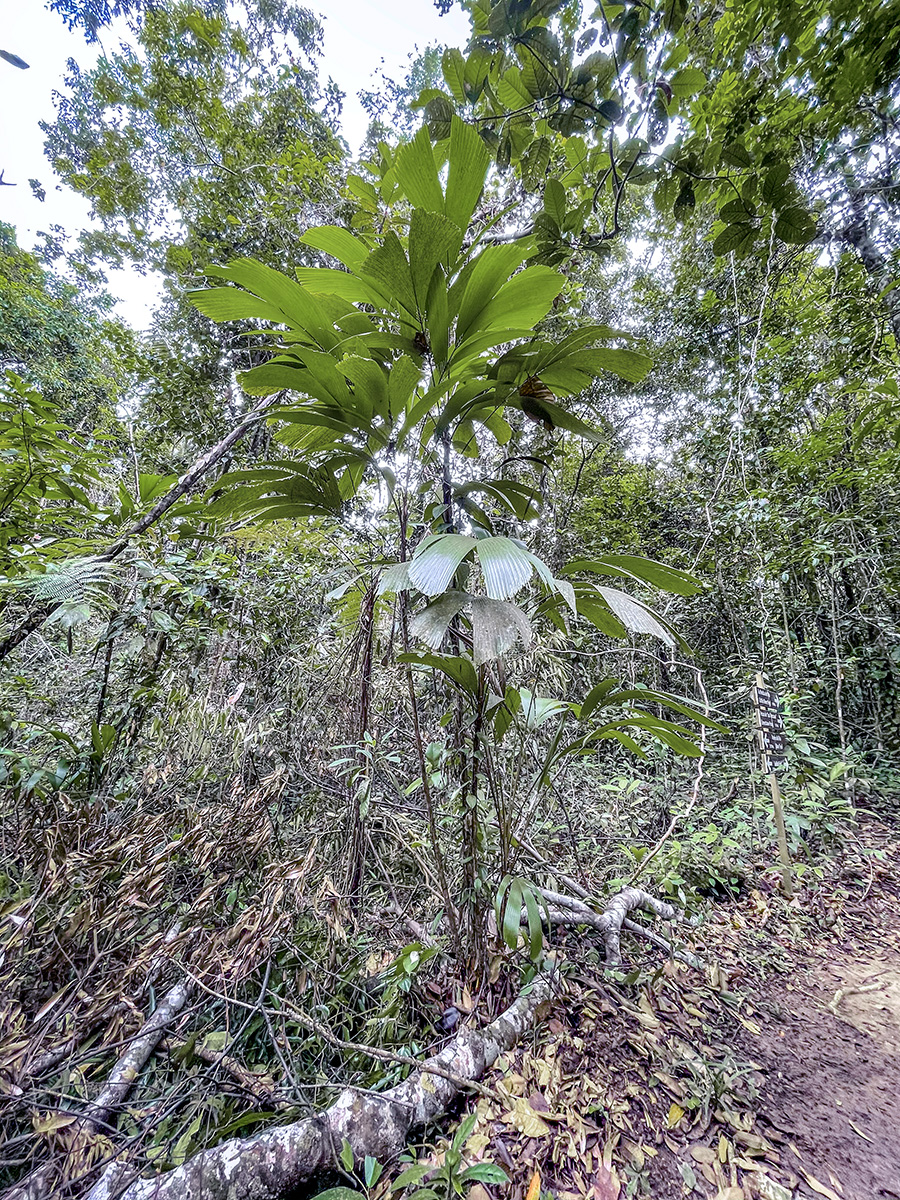
One of the rarest palms, Reinhardtia elegans, photographed during our project on the Biodiversity of Livingston. Photography by: Nicholas Hellmuth.
Palms constitute a group of plants with many and different uses. In Guatemala, they have been used as food sources (such as the coyol, Acrocomia aculeata, or the palmito, Euterpe macrospadix), as building and thatching materials, and as ornamental plants given their great beauty. Nevertheless, many palms of Guatemala are in danger of extinction.
It is important to acknowledge that with forest degradation and illegal wildlife trade, there is a greater risk of losing the palm diversity which is so abundant and characteristic of our country. To this day, it is already difficult to find some palm species in the wild, which remain vulnerable for the reasons already mentioned. Due to this, it is worth remembering the importance of taking care of the forests and the natural resources that we have.
Check this illustrated PDF in Spanish that sums up the information on this blog.



